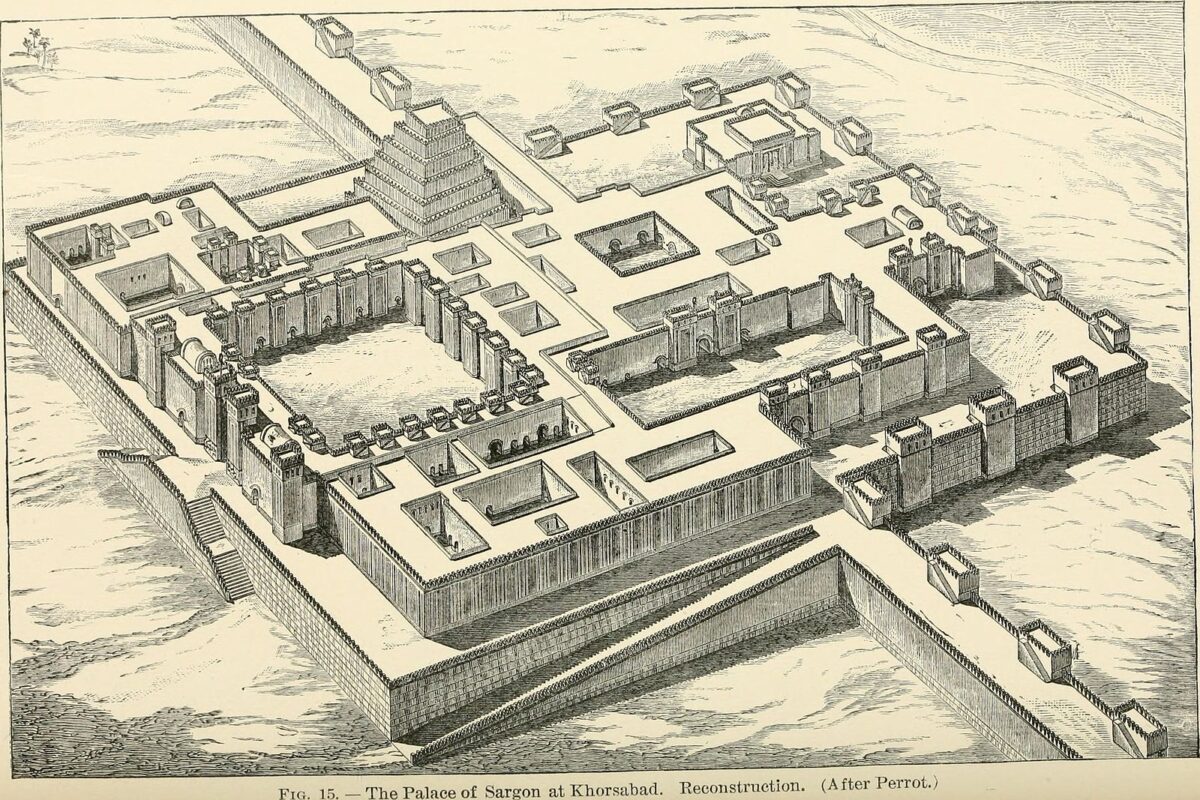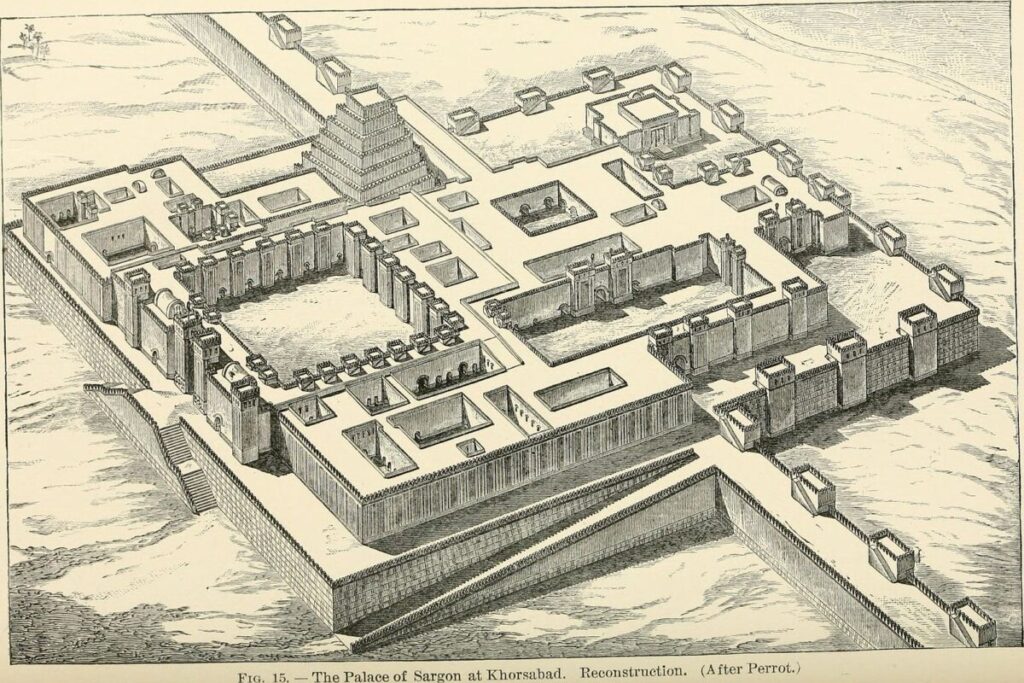
Experts have uncovered a 127-room villa in a new magnetic survey conducted at the ancient Assyrian capital of Khorsabad
Experts have uncovered a 127-room villa in a new magnetic survey conducted at the ancient Assyrian capital of Khorsabad in northern Iraq have carried out a comprehensive magnetic survey at Khorsabad, the former capital of the ancient Assyrian Empire. Utilizing advanced technology, they have uncovered the remnants of a vast villa featuring 127 rooms, along with royal gardens, the city’s water gate, and five substantial buildings that may have served various functions.
This site, which dates back 2,700 years, was originally founded as Dur-Sharrukin, or “Fortress of Sargon,” by the Neo-Assyrian Emperor Sargon II in 713 B.C. Sargon II initiated the construction of a new capital city named after himself in the arid landscape of what is now Iraq. For many years, it was believed that this ambitious endeavor was abruptly halted, leaving only the traces of a construction site. However, recent surveys have challenged this perspective, revealing that the city thrived beyond the palace. Data visualizations from a precision magnetometer have unveiled previously unknown structures and infrastructure within the city walls.
Sargon II passed away shortly after the construction of Dur-Sharrukin began. His son quickly established his own capital in Nineveh, and for the next 2,500 years, Sargon II’s ambitious project faded from memory. It wasn’t until the 1800s that French archaeologists rediscovered the site.
Their excavations of Sargon’s palace revealed significant artifacts of Neo-Assyrian art and culture, but other teams working in different parts of the city found little of interest. As a result, archaeologists concluded that the palace was the sole structure initiated within the city walls of Khorsabad, which encompass an area exceeding one square mile (1.7 by 1.7 kilometers).

In 2017, the French Archaeological Mission in Khorsabad embarked on a new initiative to assess surface damage and conduct the first geophysical survey of the buried remains at the site, following the conclusion of the Islamic State’s two-year occupation. This survey aimed to uncover the city’s water infrastructure, gain new insights into the wall fortifications, and possibly reveal additional signs of habitation beyond the palace.
The archaeologists faced significant challenges while working underground. They employed a magnetometer, a device that detects buried structures by mapping subtle changes in the Earth’s magnetic field, which proved to be an invaluable tool for locating hidden features that had been lost for centuries. As noted in a press release from the American Geophysical Union (AGU), this technology is particularly useful for archaeologists seeking to identify concealed structures.
Jörg Fassbinder, a geophysicist from Ludwig-Maximilians-University in Munich and the lead author of the study, presented the findings at the 2024 AGU Annual Meeting. He stated, “Every day we uncovered something new… all of this was achieved without any excavation. Since excavation can be very expensive, the archaeologists wanted to have a clear understanding of what they might find before digging. The survey helped save both time and resources, making it an essential step before any excavation begins.”
When the data were visualized as grayscale images, faint outlines of structures appeared at depths of six to ten feet (two to three meters) below the surface. The results indicated the location of the city’s water gate, possible palace gardens, and five large buildings, including a 127-room villa that is twice the size of the U.S. White House. These findings provide strong evidence that Khorsabad was a thriving city for at least a certain period.
Fassbinder’s discoveries reveal a bustling urban landscape extending beyond the palace walls, suggesting a vibrant capital teeming with activity.
American Geophysical Union (AGU)
Cover Image Credit: Reconstructed Model of Palace of Sargon at Khosrabad. Public domain
You may also like
- A 1700-year-old statue of Pan unearthed during the excavations at Polyeuktos in İstanbul
- The granary was found in the ancient city of Sebaste, founded by the first Roman emperor Augustus
- Donalar Kale Kapı Rock Tomb or Donalar Rock Tomb
- Theater emerges as works continue in ancient city of Perinthos
- Urartian King Argishti’s bronze shield revealed the name of an unknown country
- The religious center of Lycia, the ancient city of Letoon
- Who were the Luwians?
- A new study brings a fresh perspective on the Anatolian origin of the Indo-European languages
- Perhaps the oldest thermal treatment center in the world, which has been in continuous use for 2000 years -Basilica Therma Roman Bath or King’s Daughter-
- The largest synagogue of the ancient world, located in the ancient city of Sardis, is being restored











Leave a Reply